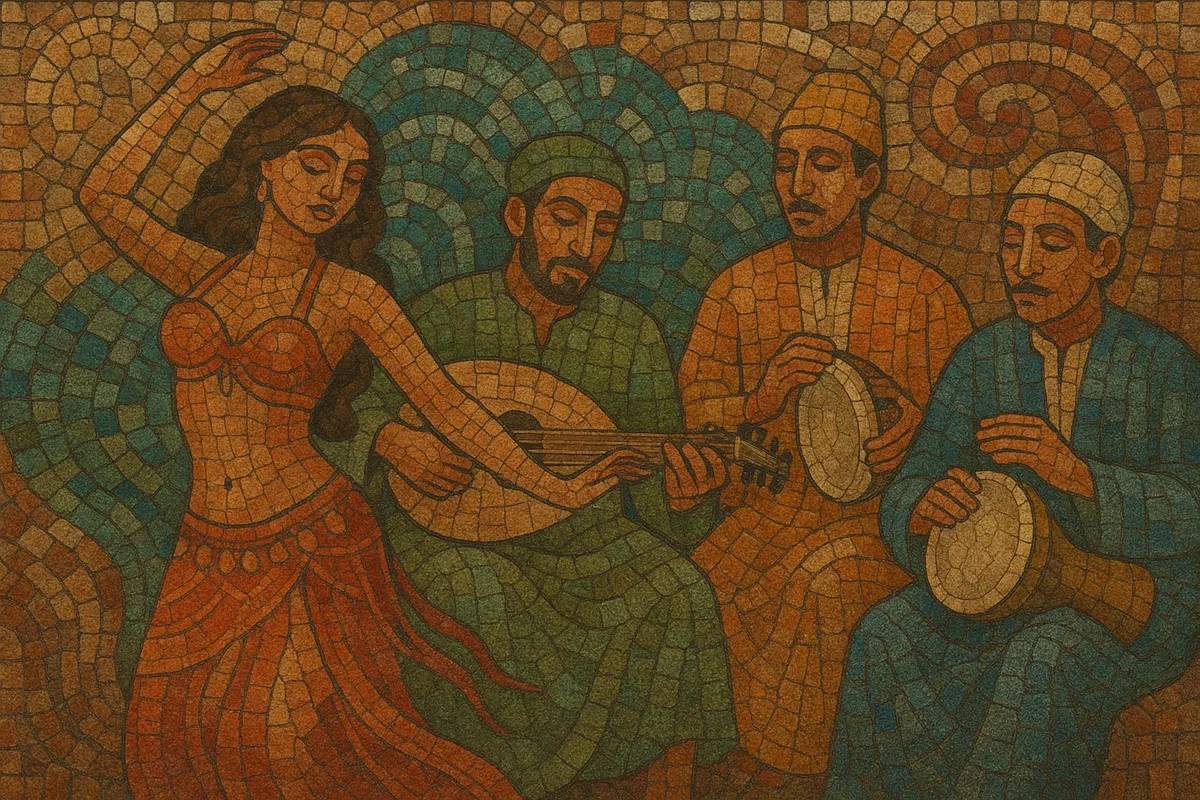Raqs baladi is an Egyptian social dance and the musical style that accompanies it, literally meaning "country/local dance" in Arabic. It emphasizes grounded, earthy movement and a warm, intimate musical feel rooted in everyday life.
Musically, raqs baladi is modal (maqām-based) and rhythm-led, featuring a prominent baladī/maqsūm groove on tabla (darbuka) and riqq, with melodic improvisations (taqsīm) on accordion, oud, or ney. The hallmark "baladī progression" often begins with a free or rubato taqsīm and gradually locks into increasingly driving 4/4 rhythms.
Compared to stage-oriented raqs sharqi, raqs baladi is less theatrical and more conversational, celebrating neighborhood gatherings, weddings, and family events. It is a cornerstone of Egyptian musical identity, blending rural folk roots with early 20th‑century urban instrumentation.
Raqs baladi traces its roots to rural Egyptian folk dances and songs that migrated into cities during the late 19th and early 20th centuries. As rural communities moved to Cairo and Alexandria, their participatory dance practices adapted to urban social life while retaining a grounded, communal feel. The music absorbed the Arabic modal (maqām) system and traditional rhythmic cycles used across Egyptian folk and classical settings.
In the early 20th century, Western-introduced instruments like the accordion entered Egyptian ensembles and became central to the baladī sound. A signature performance format developed—the "baladī progression"—in which a soloist (often accordion) opens with free taqsīm, then the percussion gradually introduces baladī or maqsūm grooves, building intensity. This period fixed the dance’s urban identity distinct from both rural folk and the more theatrical cabaret stage forms that would become raqs sharqi.
Through the mid-20th century, raqs baladi flourished in neighborhood celebrations and wedding bands. While film and nightclub culture elevated raqs sharqi, many star dancers kept a recognizably baladī segment in their sets, preserving its intimate, conversational quality. Studio percussionists and bandleaders documented the core grooves (baladī, maqsūm, masmūdī kabīr/saghīr, wāḥda), shaping teaching and practice worldwide.
From the late 20th century onward, dedicated percussion and dance recordings, workshops, and festivals spread raqs baladi globally. While modern Egyptian pop and shaʿabi influenced repertoire choices, the baladī essence—close dialog between solo melody and drum, modest hip and torso articulations, and communal call‑and‑response energy—remains central.


